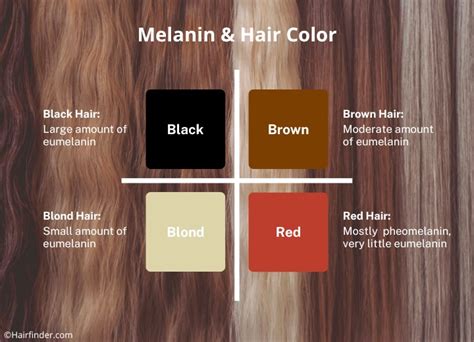Introduction
Human hair color is an intriguing and diverse trait that has fascinated researchers and captivated the imagination for centuries. With an estimated 100,000 different shades and hues, the human hair color spectrum is a testament to the remarkable genetic diversity of our species. This article explores the science behind human hair color, its genetics, and its social and cultural significance.

Hair color is primarily determined by the amount and type of melanin, a pigment found in the hair shaft. There are two main types of melanin:
- Eumelanin: Responsible for brown and black hair colors
- Pheomelanin: Responsible for red and blond hair colors
The balance between eumelanin and pheomelanin determines the specific shade of hair color. Individuals with a high proportion of eumelanin have darker hair, while those with more pheomelanin have lighter hair.
Genetics of Hair Color
Hair color is a polygenic trait, meaning that it is influenced by multiple genes. The most significant gene involved in hair color is the melanocortin-1 receptor (MC1R) gene. Variants in this gene affect the production and distribution of melanin, influencing hair color.
Other genes involved in hair color regulation include:
- TYR: Encoding the tyrosinase enzyme involved in melanin synthesis
- OCA2: Regulating the production of the P protein, a key component in melanin formation
- SLC45A2: Encoding the MATP protein, which transports melanin precursors
Hair color has played a significant role in human societies throughout history. It has been associated with cultural identity, social status, and even beliefs about personality traits.
- Cultural Identity: In many cultures, hair color has been used to identify different ethnic groups and geographic regions.
- Social Status: In some societies, darker hair was associated with lower social status, while lighter hair was perceived as a sign of nobility.
- Personality Traits: Certain hair colors have been stereotyped with specific personality traits, such as blondes being perceived as more outgoing and adventurous.
Understanding your hair color can bring several benefits:
- Personalized Hair Care: Knowing your hair color can help you customize hair care products and treatments to suit your specific needs.
- Hair Dyeing: Accurately identifying your hair color is crucial for achieving desired results when dyeing your hair.
- Medical Diagnosis: Hair color changes can sometimes indicate underlying medical conditions, such as iron deficiency or thyroid disorders.
| Region | Percentage of Dark Brown Hair | Percentage of Light Brown Hair | Percentage of Blond Hair | Percentage of Red Hair |
|---|---|---|---|---|
| Africa | 95% | 5% | 0% | 0.5% |
| Europe | 50% | 30% | 20% | 2% |
| Asia | 90% | 10% | 0% | 0% |
| North America | 70% | 25% | 5% | 1% |
| Hair Color | Eumelanin Content | Pheomelanin Content | Melanin Ratio |
|---|---|---|---|
| Black | High | Low | >10:1 |
| Dark Brown | Moderate | Low | 5:1-10:1 |
| Light Brown | Low | Moderate | 2:1-5:1 |
| Blond | Very Low | High | <2:1 |
| Red | Trace | High | <1:10 |
| Gene | Function |
|---|---|
| MC1R | Influences eumelanin production |
| TYR | Regulates melanin synthesis |
| OCA2 | Controls P protein production |
| SLC45A2 | Transports melanin precursors |
| Culture | Hair Color Association |
|---|---|
| Ancient Greece | Black hair: Power and virility |
| Medieval Europe | Red hair: Witchcraft and heresy |
| Victorian England | Blond hair: Beauty and innocence |
Conclusion
Human hair color is a fascinating and complex trait that results from the interaction of genes, culture, and environment. Understanding the science behind hair color provides us with valuable insights not only into our physical appearance but also into the rich tapestry of human diversity. By embracing the spectrum of hair colors, we celebrate the uniqueness of every individual and the beauty of human connection.
